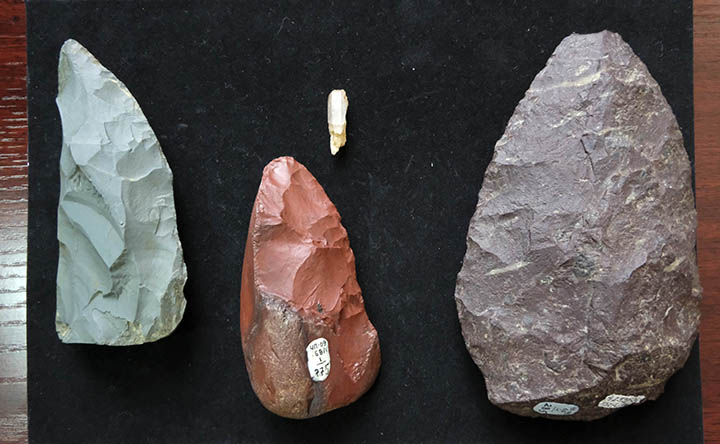In a Siberian cave, a 60,000-year-old Neanderthal ‘Swiss Army Knife’ was discovered
Experiment shows multi-purpose tool can still be used for butchering: it highlights the skills of these extinct early humans. This week has seen the revelation from an international study that Neanderthals twice invaded cold Siberia, around 120,000 and 60,000 years ago.

Scientists have also unearthed the tools used by the early humans when they settled in the Altai Mountains.
Professor Kseniya Kolobova, of the Institute of Archaeology and Ethnography in Novosibirsk, suggested that the tool called by scientists ‘asymmetrical backed biface’ was the ancient equivalent of the famous modern Swiss Army knife.


They were discovered among 90,000 stone artefacts at Chagyrskaya Cave.
‘This thing for Neanderthals was like a Swiss Army knife for us now,’ she said, holding the stone tool, which is made of chalcedonite
‘We have a blunt end, so it is convenient to hold.’

Remarkably, scientists show that it is still usable after 60,000 years.
‘You can butcher for about an hour with this tool, as our experiment showed until it blunts…
‘Then they sharpened it again and again and again.’

It was a ‘multi-functional tool, which can cut whatever you like, (butcher) and process skin, or make other tools.
‘This is a Palaeolithic Swiss Army knife.’
Intriguing, too, is how small the world was in those times.


Analysis of stone tools from Chagyrskaya Cave in the Altai Mountains shows striking similarities to those found at Sesselfelsgrotte in Germany, some 5,000 kilometres away.
‘If we put our bifaces next to Europeans we do not see any differences, except the raw materials,’ she said.
‘European tools were made of flint, ours of chalcedony and jasper.
‘That is, they brought the tradition of making their tools through several thousand kilometres almost unchanged.’
The Neanderthals in their conquests of Siberia killed and ate bison to survive say, archaeologists. Finds linked to these archaic humans show ‘the cognitive abilities of the Neanderthals were wider than previously thought, said the professor.





